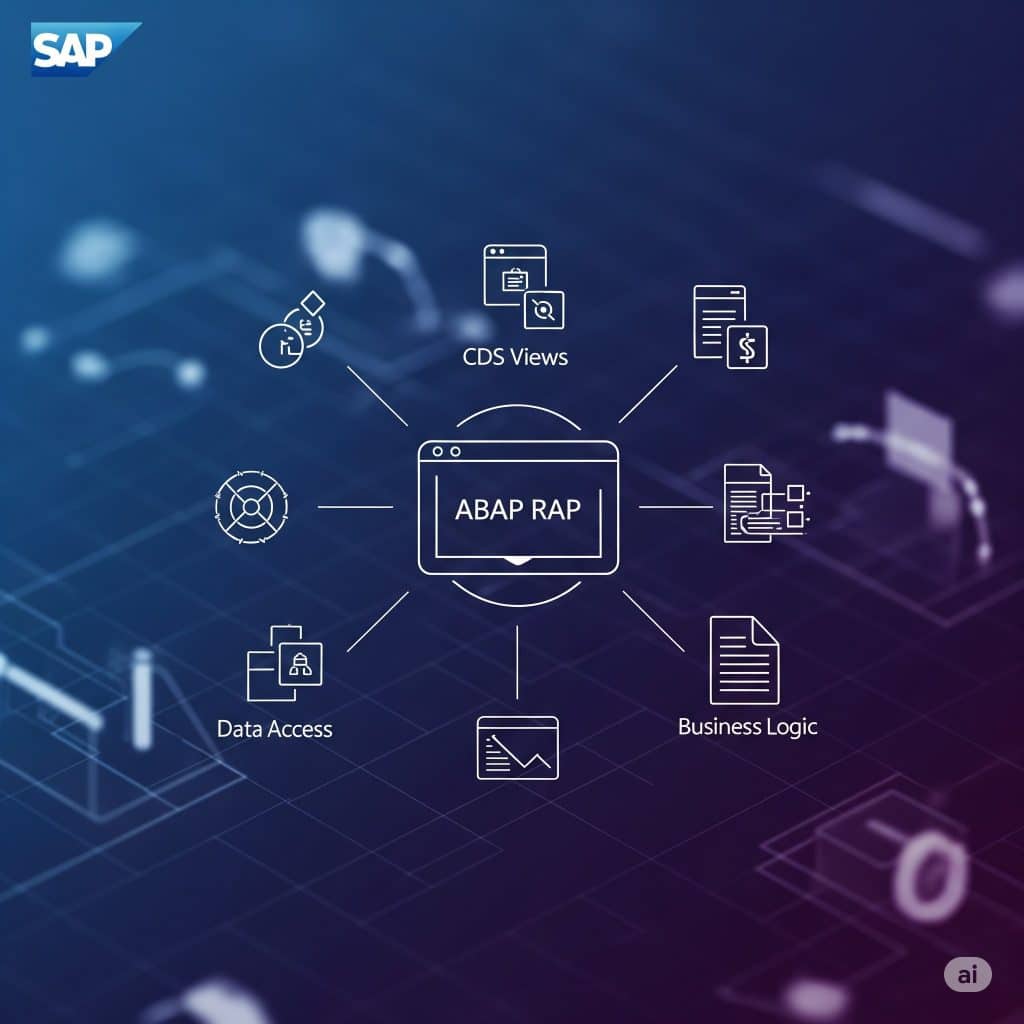In the rapidly evolving world of SAP development, staying updated with the latest programming paradigms is crucial. The ABAP RESTful Application Programming Model (RAP) stands out as the cornerstone for building efficient, modern, and Fiori-ready applications within the SAP ecosystem. But what exactly is ABAP RAP, and why is it so vital for current and future SAP projects?
This post delves into the core of ABAP RAP, its evolution, key advantages, and what you need to know to get started, drawing insights from recent discussions on this powerful model.

The Evolution of ABAP: Why RAP Emerged
For years, SAP developers navigated through various programming models, from the classical ABAP GUI and Web Dynpro to the early days of SAP Fiori. While these models served their purpose, they often presented challenges:
- Complexity: Building modern, transactional applications often involved intricate coding and significant UI5 intervention.
- Integration Hurdles: Seamlessly integrating with existing legacy code bases could be cumbersome.
- Technical Overhead: Converting OData services, especially from V2 to V4, required specific technical expertise.
The need for a streamlined, future-proof approach became evident. This is where ABAP RAP steps in, addressing these limitations and simplifying the development landscape for SAP S/4HANA and SAP BTP ABAP environment.
What is ABAP RAP? Key Features & Architecture
At its heart, the ABAP RESTful Application Programming Model (RAP) is an architecture designed for developing OData services (both V2 and V4) on both the SAP BTP ABAP environment and on-premise ABAP application servers. It’s not just a set of tools; it’s a comprehensive approach that empowers developers to focus on business logic rather than technical complexities.
Here are the salient features that make RAP a game-changer:
- Business Logic First: RAP prioritizes your application’s core business logic, abstracting away much of the underlying technical plumbing.
- Unified Development: It seamlessly integrates ABAP and CDS (Core Data Services) languages, leveraging the power of SAP HANA databases for high-performance data operations.
- Official SAP Recommendation: RAP is the recommended programming model for SAP S/4HANA on-premise Edition 2021 and onwards, solidifying its position as the go-to standard.
- Transactional Application Development: It simplifies the creation of transactional applications, enabling robust draft handling for more stateful and user-friendly experiences.
- Simplified OData Services: RAP inherently supports OData V4 and simplifies the conversion and creation of OData services, making external consumption straightforward.
The Undeniable Advantages of Adopting ABAP RAP
Embracing ABAP RAP offers a multitude of benefits for developers and organizations alike:
- Accelerated Development: By providing a clear structure and predefined patterns, RAP significantly speeds up the development cycle of enterprise-ready applications.
- Reduced Complexity: It abstracts away technical intricacies, allowing developers to concentrate on delivering business value.
- Future-Proof Solutions: As the standard for SAP S/4HANA and SAP BTP, applications built with RAP are inherently aligned with SAP’s strategic direction.
- Enhanced User Experience: Native support for draft handling and robust transactional capabilities contribute to superior Fiori applications.
- Seamless Integration: RAP is designed to integrate well with existing legacy ABAP code, facilitating modernization efforts.
Getting Started
Ready to dive into the world of ABAP RAP? Here are the essential prerequisites:
- Eclipse-based ABAP Development Tools (ADT): This is the indispensable environment for RAP development, especially for creating and managing CDS views.
- SAP System Version: For optimal development, an SAP system version of 1909 or higher is recommended. However, for productive environments, 2020 or 2021 versions of SAP S/4HANA are preferable to leverage the full suite of RAP capabilities.
- Understanding of CDS: A solid grasp of Core Data Services (CDS) is fundamental, as RAP heavily relies on CDS views for data modeling and service exposure.
Your Journey into Modern SAP Development
ABAP RAP represents a significant leap forward in SAP application development. By understanding its core principles, benefits, and prerequisites, you’re well-equipped to build robust, scalable, and modern solutions that meet the demands of today’s digital enterprises.
If you’re new to CDS, consider completing a comprehensive CDS video playlist as a foundational step. This will provide you with the necessary building blocks to confidently embark on your ABAP RAP application development journey. The future of SAP development is here, and it’s built on RAP!
Also Read – Understanding S/4HANA for Beginners: Key Concepts Explained
